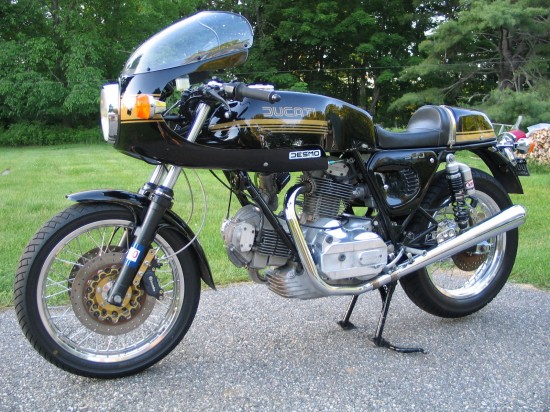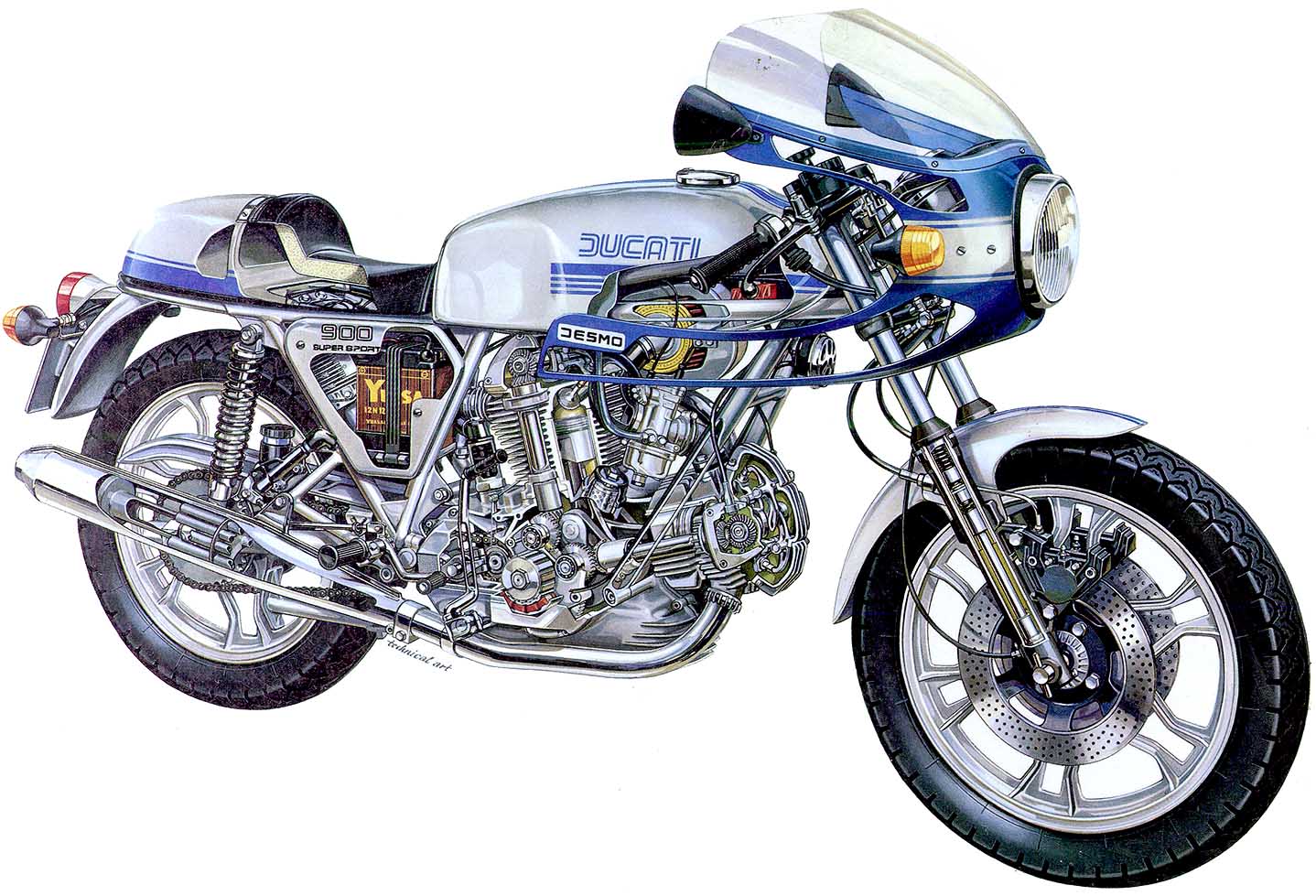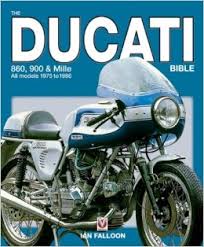The Ducati Bible: 860, 900 and Mille. All models 1975-86
By Ian Falloon, published by Veloce Books, 160 pages, 200 pictures, 35.00 UK, $60.00 U.S. $65.00 Canada. www.velocebooks.com; www.veloce.co.uk USBN 978-184584-121-8

The bevel-drive Ducati 900 SS V-Twin of the 1970-1980s is unquestionably the most iconic motorcycle of its time. It is comparable to the Brough Superior in the 1920-1930s, the Vincent Black Shadow of the late 1930-1950s, the BSA Gold Star of the 1950s and the Triumph Bonneville of the 1960s.
As prices roar towards the $40,000 mark on the heels of the original green-frame 750 Super Sport – which has now crossed into six figures – it becomes more and more important to know exactly what you are buying. As the number of mechanics who worked on the 900 SS back in the day dwindles, accuracy and excellent condition become more and more vital.
Fortunately, excellent machines beget comparable experts and Ducati fans are lucky that Ian Falloon, a New Zealander now living in Australia, has returned to the subject with a companion to his Ducati Bevel Twins Restoration Manual. This isn’t a “how to restore” volume, in the same sense of his original book, it is a history of the detailed development of the various models, what changes occurred and when, and what to look for.
Fabio Taglioni started work on the square case V-twin engine in 1973. The original round-case 750 cc engine was both difficult and expensive to build, and forthcoming legislation was going to require a left-side gearshift. Taglioni expected the engine size to increase to 864 cc, and when it launched in 1974 as the 860 GT it was styled to match the angular body. When the Giorgetto Giugaro body design was poorly received, the square engine was fitted into the round Super Sport body, and the desmodronic-valve 1975 900 SS proved a winner. The square engine had stronger bevel gears, an oil filter and left-side shifter and it would persevere in various forms for 10 years.
While the faithful were grumping about the valve-spring 8/900 GTS, Ducati continued to build the 900 SS and 750 SS models for production racing in Australia, South Africa, Canada and Italy. The design was evolutionary, as so many aspects of Ducati were at the time, with engine internals, electronics and switches gradually upgraded, largely as “running changes” when improvements became available. Sadly, some of these improvement included replacing the fabulous Conti megaphone exhausts with (unfortunately named) Silentium pipes, which reduced both power and noise.
Profusely illustrated with more than 200 color photos, and combining Falloon’s encyclopedic knowledge with input and pictures from more than 50 additional experts, the story of the Super Sport, GTS, 900 Sport Darmah, Mike Hailwood Replica and Mille is explained in infinite detail, including all factory upgrade packages to each model through the production run, and tracking them byprogressive VINs. Each model is appraised technically and there are complete specifications in the index.
Significant racing participation is also reported, including Mike Hailwood’s return to the Isle of Man in 1978 after an 11-year absence, and his winning the F1 TT. Significantly, Roger Nicholls’ TT-winning NCR Super Sport of 1978 was far superior to the factory bike provided for Hailwood in 1979, forcing him to reuse the 1978 with a narrower swing arm. He lost 5th gear in the course of the race, and one exhaust began to fall off, but even though Hailwood stopped to fix it, he still finished fifth. However, Hailwood thought the bike uncompetitive, and did not ride it in any further races.
Commercially, the red and green MHR and Mille MHR was an enormous success, with a total of 7,169 sold, more even than the 6,103 900 Super Sport models in their signature blue and silver or black and gold. Many MHRs went straight into collections and are rarely seen.
Simply put, this book is a must-have for anybody interested in owning a Ducati bevel twin, or any former owner who has prolonged sentimental memories about one (my brother, for example, having forgotten three of us couldn’t bump start it after he washed it). It’s also an essential reference for anyone who wants to stand around with Ducatisti and sound intelligent. This appropriately named Ducati Bible represents an ideal Christmas present, but don’t expect to talk to the grateful recipient for an hour or two.








